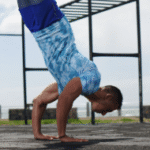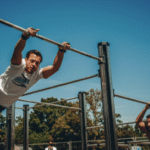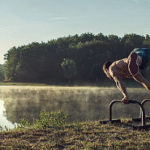Getting Ready for Your First Calisthenics Competition in Houston
Getting ready for your first calisthenics competition in Houston requires a structured plan that balances strength peaks, skill consistency, and strategic acclimation to the local environment. Houston’s calisthenics events—often promoted by local academies like the Mekanix Gym model or community groups at Memorial Park —typically test two areas: Freestyle (dynamic moves) and Max Rep/Static Holds (strength).
Here is a detailed guide for a Houston athlete preparing for their first competition.
- Six to Eight Weeks Out: The Preparation Phase
This phase focuses on identifying weaknesses, building raw volume, and solidifying the training routine.
- Define Your Competition Category
Houston events typically include:
Max Reps: Max pull-ups, dips, or push-ups (requires high volume endurance).
Static Holds: Max time for Planks, L-Sits, or Handstands (requires core density and isometric strength).
Freestyle: Combining dynamic moves (360s, swings) with statics (levers, handstands). Focus on consistency over complexity for your first competition.
- Increase Volume and Frequency
Volume: Increase the total number of sets and reps by 10% to 15% each week . For max rep categories, train the specific movement 3 times per week (e.g., weighted pull-ups on Monday, high-rep pull-ups on Wednesday, explosive pull-ups on Friday).
Accessory Work: Dedicate time to wrist conditioning, shoulder stability drills, and deep core work (e.g., Hollow Body Holds). These prevent the most common training-derailing injuries.
Houston Climate Acclimation (If Outdoor Event): If the competition is planned for an outdoor venue (like a park) during the hotter months, start moving a portion of your training to the midday heat (if safe, supervised, and well-hydrated) 4-5 weeks out, gradually acclimating your body to the environment.
- Two Weeks Out: Peaking and Simulation
This is the most critical phase where you test your performance under competition stress and begin to reduce volume.
- Full Routine Simulation (Test Day)
Perform a full run-through of your competition routine at a local park or gym exactly two weeks before the event.
Time Management: Time the entire routine, including rest periods and warm-ups, to eliminate surprises.
Judge Simulation: Ask your coach or training partners to judge your reps according to competition standards (e.g., ensuring your chin clears the bar on pull-ups, or your hips are perfectly rigid during the L-Sit). Quality beats quantity.
- Tapering the Volume
Week 2 Taper: Reduce overall training volume by 30% to 40% . Maintain intensity (use heavy weights for low reps, or hard skills), but reduce the total number of sets. This allows muscles and the central nervous system (CNS) to recover.
Focus on Mobility: Increase your time spent on flexibility, mobility, and foam rolling.
- The Final Week: Deload and Logistics
This is a rest week designed to bring you to a physical and mental peak.
- Final Training and Rest
Deload (Days 7–3): Reduce volume by another 50% (70% below peak volume) . Stop lifting heavy weights. Perform light movement drills, focused stretching, and perfect-form low-rep sets of your competition moves.
Final Rest (Days 2–1): Take these days completely off the main calisthenics movements. Focus on eating, sleeping, and light movement (walking or yoga).
- Competition Day Logistics (Houston Specific)
Hydration/Nutrition: Hydrate aggressively in the 48 hours leading up to the event, prioritizing electrolytes (due to potential Houston heat). Eat a carb-heavy, easily digestible meal 2-3 hours before the competition start time.
Location Check: Confirm the exact location, parking situation, and arrival time. For park events, arrive early to secure a good warm-up spot and acclimate to the specific equipment.
Gear Check: Ensure you have all necessary gear: Liquid Chalk (critical for grip in Houston humidity), comfortable clothes, competition attire, and a large water jug.
The goal for your first competition is simple: finish your routine safely and confidently. Focus on perfect form, and the results will follow.

Getting Ready for Your First Calisthenics Competition in Houston
Route
Calisthenics Gym Houston Functional Bodyweight Training
Secondary phone: (346) 483-3195
Email: info@calisthenicsclubhouston.com
URL: https://calisthenicsclubhouston.com/
Monday 6:00 AM - 7:00 PM Tuesday 6:00 AM - 7:00 PM Wednesday 6:00 AM - 7:00 PM Thursday 6:00 AM - 7:00 PM Friday 12:00 PM - 6:30 PM Saturday 9:45 AM - 12:00 PM Sunday 3:00 PM - 5:00 PM





